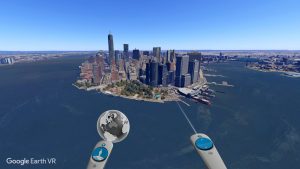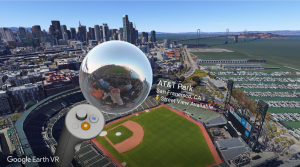Virtual Reality and Augmented Reality
Virtual Reality
Virtual reality refers to computer-generated environments that are designed to feel real which people can explore and interact with.
Augmented Reality
Augmented reality involves an interaction between the real world and the digital world. Real world objects are enhanced by computer-generated information.
Initial feelings
Prior to this class I haven’t had any experience with virtual or augmented reality. Honestly, I never really had any interest in the topic. When I thought of Virtual Reality I instantly envisioned people who are into video games. I never could have imagined the educational possibilities that lie in the field of AR/VR.
Exposure to AR
Quiver masks
Quiver masks involves filling in a colouring page of a mask colouring and then scanning it with the Quiver masks app. The scanned mask appears on the app and can then be ‘placed’ on other people’s faces. Essentially, the mask is brought to life!
This AR program could be used in the classroom for both educational and ‘fun’ purposes. The program would likely appeal to creative students as well as students that enjoy role-play.

Merge Cube
ANATOMYAR+ for merge cube allows users to hold internal organs in their hands and examine them. Intricate parts are labelled with annotations.
This program is extremely useful for students studying science. It is not always practical to do dissections or be able to see organs in the flesh. Students don’t even need to leave the classroom to have a “hands-on” experience.
Exposure to VR
Google Earth VR
We had the opportunity to explore VR in the library over the course of two lessons. I was able to put use Google Earth VR where I could choose any place in the world to explore. I had used google earth on my computer before but actually standing next to the colosseum in Rome and the Great Wall of China was a completely different experience. I even got to stand in front of my own house in Melbourne, Australia. I absolutely loved this VR experience because I was able to see places that would cost hundreds of dollars to visit in real life. I also got to show my peers where I live in Australia.


Clouds over Sidra
Clouds Over Sidrais a film shot in VR. The film is set in the Za’atari Refugee Camp in Jordan, which hosts 80,000 Syrians who have fled war. The story follows a 12-year-old girl as she attends school, plays football with her friends and eats dinner with her family. She shares her thoughts and feelings about her experience. Personally, this type of VR resonates most with me. It is incredibly difficult for people to understand the lives of others unless they have actually walked in their shoes, which is not always possible. I think that schools should foster interpersonal skills amongst their students in order to create global citizens that are equipped to enact change in the world. VR films like this could help students develop these skills in a meaningful way.

Benefits of AR/VR
- Students can be exposed to content that they would not otherwise have access to
- Complex topics can be broken down and explained in a way that makes sense for students
- The learning experience becomes meaningful as students can interact with content rather than just absorb it
- Students will likely be more excited about learning due to the use of digital technology
Drawbacks of AR/VR
- Not all schools/students can afford the devices required for AR/VR
- Students may stop enjoying learning that does not involve AR/VR (If this is the case, perhaps educators should consider how to engage students in a wider variety of ways)
- Some students are sceptical about virtual reality because it is not actually real
Looking Ahead
I am very grateful for the experiences that I have had with VR and AR these last couple of weeks. I feel like I have been exposed to a whole new world of educational possibilities. I am going to actively seek out more VR and AR experiences so that I can become more proficient and then incorporate AR/VR into my future classrooms. I now know that AR/VR is not a tool just for gamers. AR/VR can provide immersive experiences for students that foster new perspectives, critical thinking, creativity and collaboration.